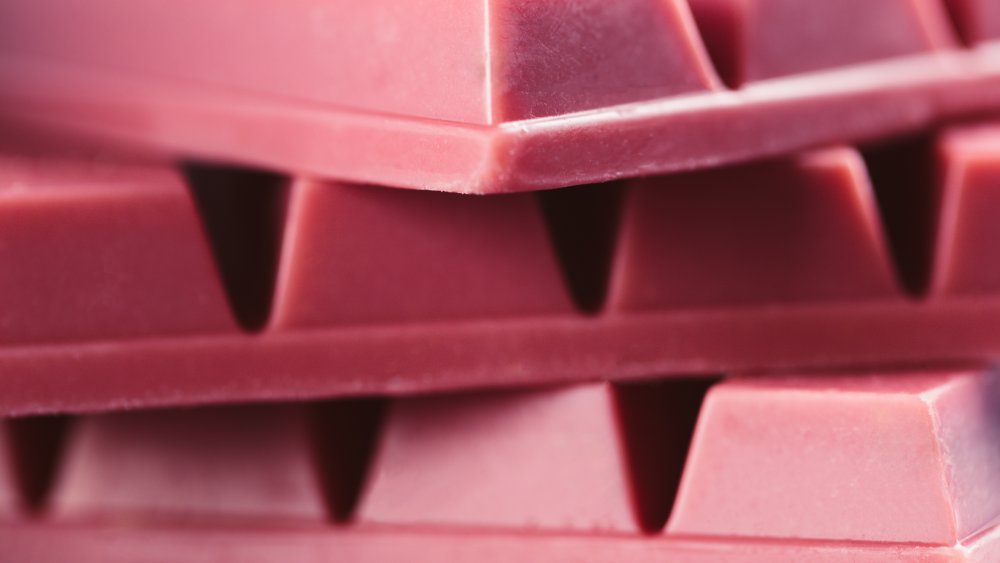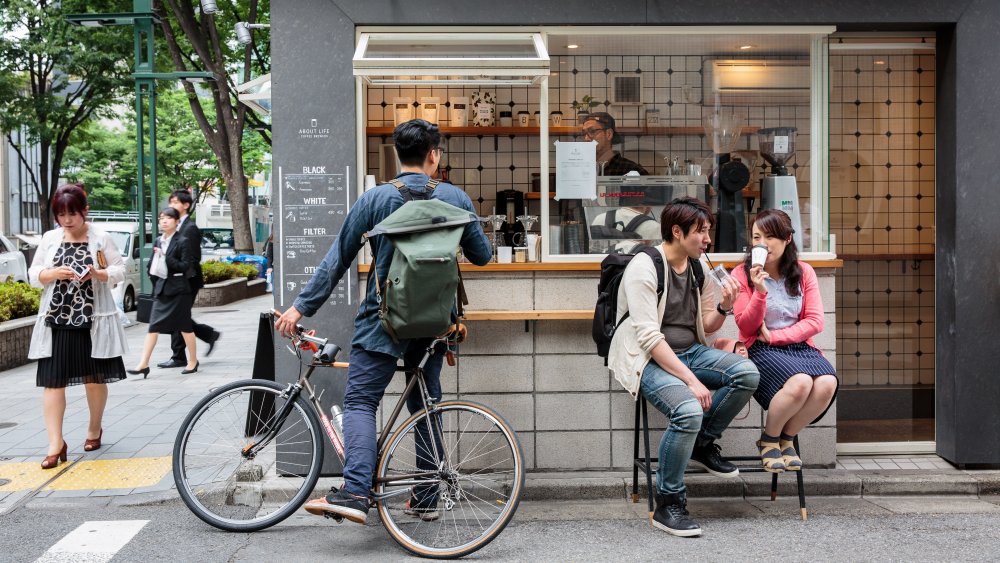The Ingenious Way Nestlé Convinced People In Japan To Drink Coffee
The Japanese Kit Kat is a world of its own. In 2018, The New York Times explored Japan's Kasumigaura factory, where Kit Kats are manufactured. Frankly, it makes Charlie and the Chocolate Factory look like a boring, 9 a.m. office meeting. The country offers Kit Kats of almost every shade and flavor imaginable, from strawberry to sweet potato. Soy sauce-flavored candy? Why not, right? (via NPR).
And somewhere between the package of plum wine Kit Kats and banana Kit Kats, there's another flavor — cafe au lait — with a deep history. In Japan, coffee-flavored candy isn't simply another item on the long list of fascinating flavors. Before these Kit Kats emerged, coffee-flavored candy was part of a pretty creative marketing scheme that would have made Don Draper's jaw drop to the floor. Kit Kat's parent company, Nestlé, spent years marketing coffee-flavored candy to Japan. The reason? They wanted consumers to get an acquired taste for the real drink so they could buy that too, according to a case study from Better Marketing.
Nestlé aimed to change tea lovers into coffee drinkers
In the 1970s, Nestlé was hustling to sell coffee in Japan. And this was a fascinating time for Japanese cuisine: Japan had recently established its first McDonald's franchise. Yoshoku, a style of Japanese food that plays off of popular western dishes — like hamburgers and spaghetti — had been developing for decades (via The New York Times). This was the moment for western companies looking to market their products in the east-Asian country.
But Nestlé wasn't finding much success, according to Better Marketing. Unlike coffee-centric countries — take Italy or Costa Rica — Japan has a rich history with tea. Not coffee. So Nestlé enlisted the help of Clotaire Rapaille, a psychoanalyst.
"Nestlé? What can I do for Nestlé?" Rapaille responded, according to PBS. He'd spent years working with children who had autism — a far cry from corporate marketing. Nevertheless, Rapaille headed to Japan, where his expertise in psychology and memory allowed him to crack an important code. When consumers have a childhood memory of something — like chicken noodle soup, or mom's hot cup of coffee — that long-embedded memory creates a bond between the consumer and the product, Rapaille deduced. When Rapaille interviewed and tested consumers in Japan, he found many didn't have those fond, childhood memories of coffee: Tea, simply, was, and is, a much larger part of the culture. Rappaile aimed to change that.
Nestlé hit the coffee-flavored candy market hard
Nestlé engaged in a years-long plan: It started with sweet, coffee-flavored products for kids. "We started, for example, with a dessert for children with a taste of coffee. We created an imprint of the taste of coffee," Rappaile told PBS.
However, it's unclear whether Nestlé whipped out the coffee-flavored Kit Kat bars immediately. They most likely started with other coffee-flavored candies, judging from Rappaile's PBS interview. While Japan's Kit Kat market is off-the-charts intricate and popular, the Japanese flavors didn't really emerge until the 2000s, according to The New York Times. It's more likely that espresso and cafe au lait Kit Kats popped up around that time.
Still, while they may not have been Kit Kats, Nestlé's coffee-flavored desserts made a difference. According to Better Marketing, those early, coffee-flavored treats likely created an "imprint" on children. By the time these young consumers were older, and interested in the real drink, Nestlé coffee was ready for them. By 2014, the coffee market was hitting record highs in Japan, according to The Japan Times. And by the time coffee-flavored Kit Kats were introduced, consumers were well-acquainted with the drink and flavor. We can thank Clotaire Rapaille, who knew early on that food and memory go hand in hand.


